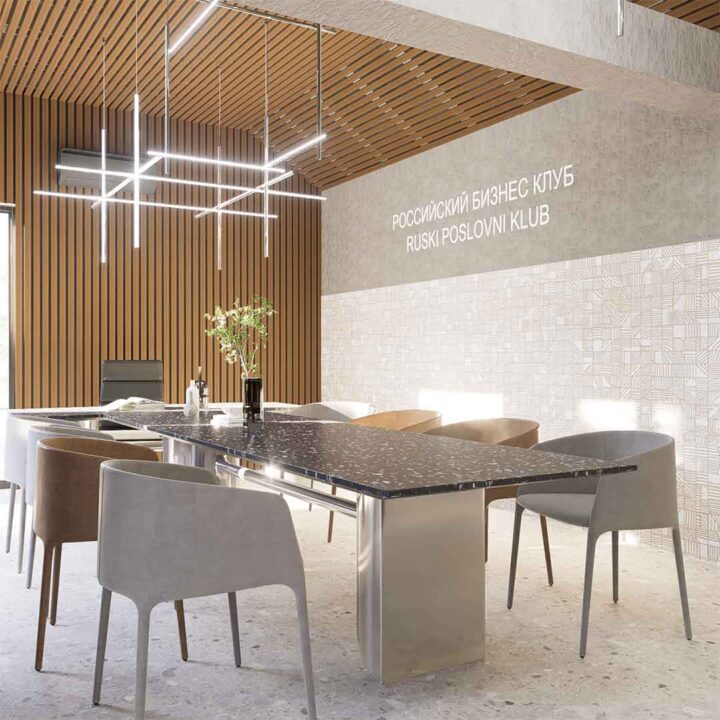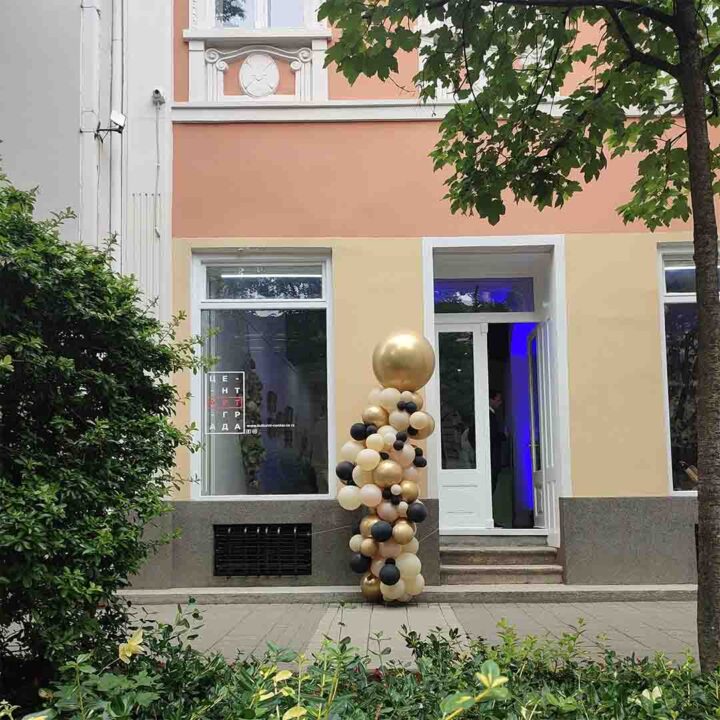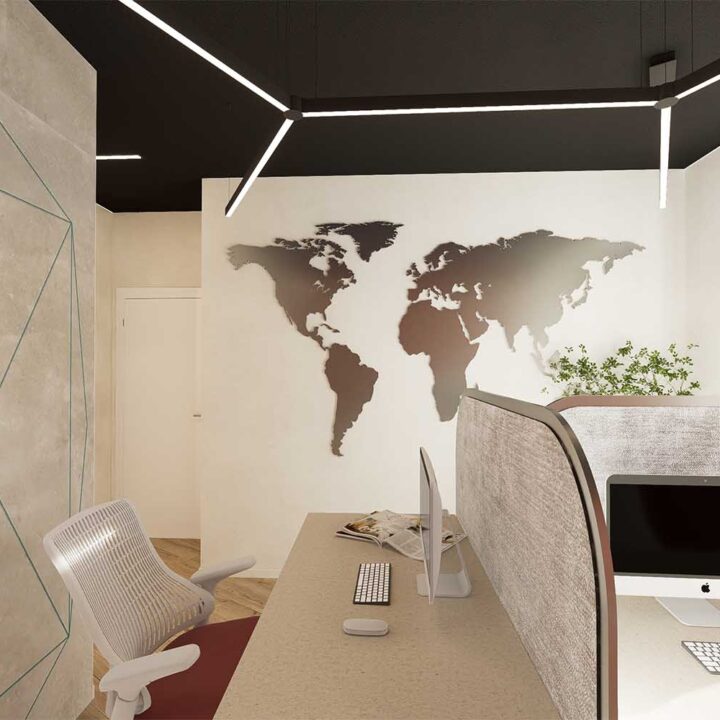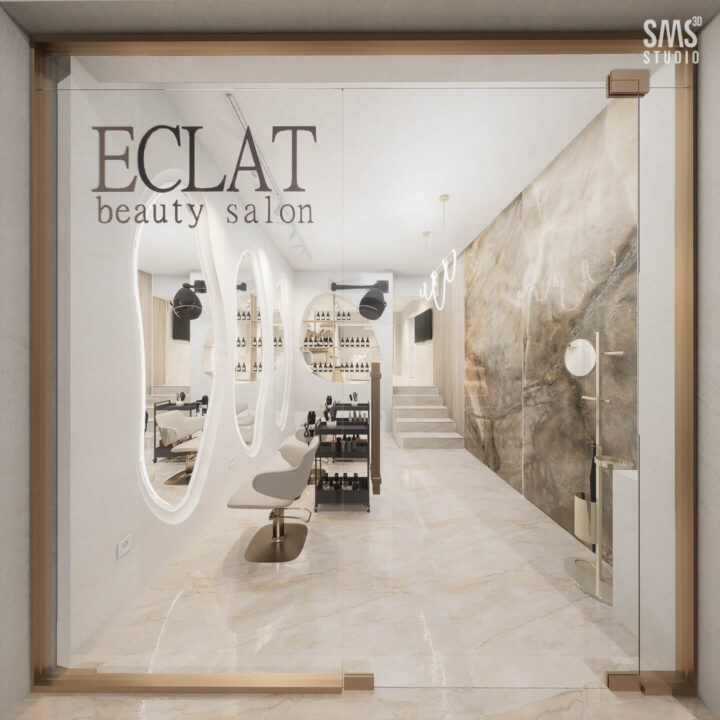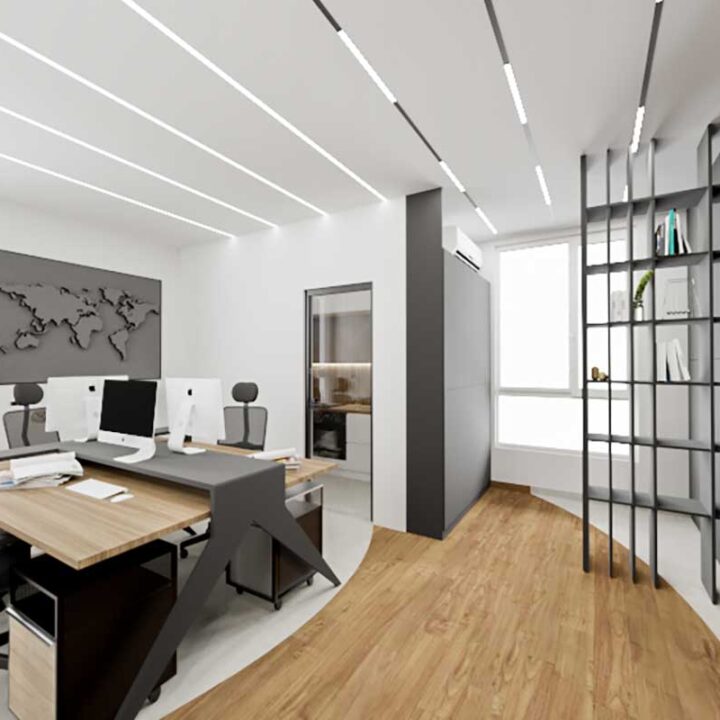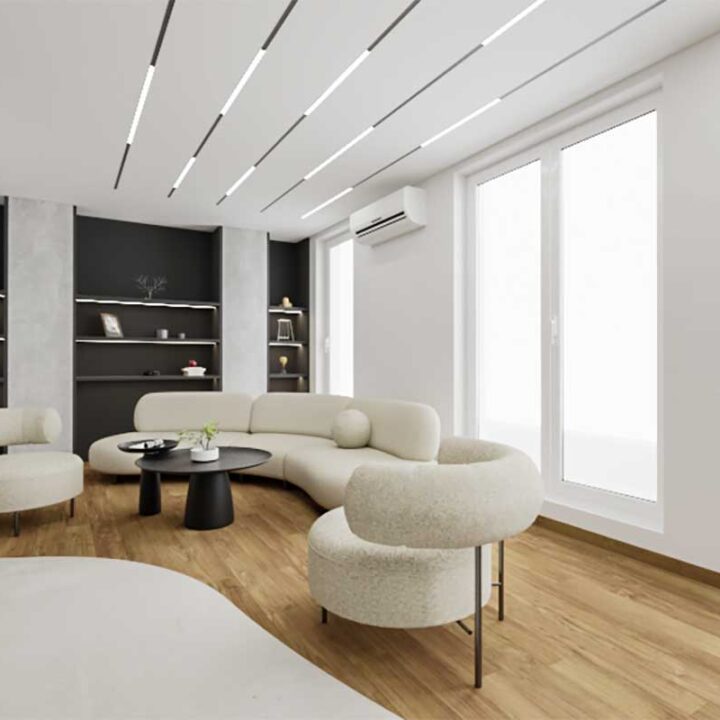Commercial interior design
Commercial interior design plays a crucial role in creating an efficient and pleasant work environment. A well-designed space not only enhances employee productivity but also reflects the brand identity, improves infrastructure and ergonomics, optimizes ventilation and lighting, utilizes quality materials, enables better space organization, facilitates paperwork archiving, integrates smart concepts, and ensures efficient air conditioning. Below, we will discuss ten key elements that contribute to successful commercial interior design.
1. Brand
Interior design should reflect the company’s brand identity and values. Using corporate colors, logos, and other visual elements in the interior helps create a cohesive and recognizable image. For example, a technology company might use modern, minimalist elements with high-tech accessories, while a law firm might prefer a classic and sophisticated style.
2. Infrastructure
Modern office spaces, in addition to standard electricity and water installations, require advanced infrastructure that includes alarm and surveillance systems, high-speed internet, smart concept installations, and fire protection systems. Reliable infrastructure is crucial for the safety, efficiency, and connectivity of all devices and systems in the office.
3. Ergonomics
Ergonomics is the science of designing a workspace that maximizes productivity while minimizing discomfort and fatigue for employees. Properly designed desks and chairs, adjustable monitors, and appropriate lighting contribute to the health and well-being of employees. Ergonomics also involves organizing the workspace to allow for easy movement and access to necessary tools and documents.
4. Ventilacija
A well-designed ventilation system ensures fresh air, reduces pollution levels, and maintains an optimal temperature in the office. Air quality directly impacts employee productivity and health. Integrating ventilation systems with smart technologies allows for automatic air quality control and energy consumption optimization.
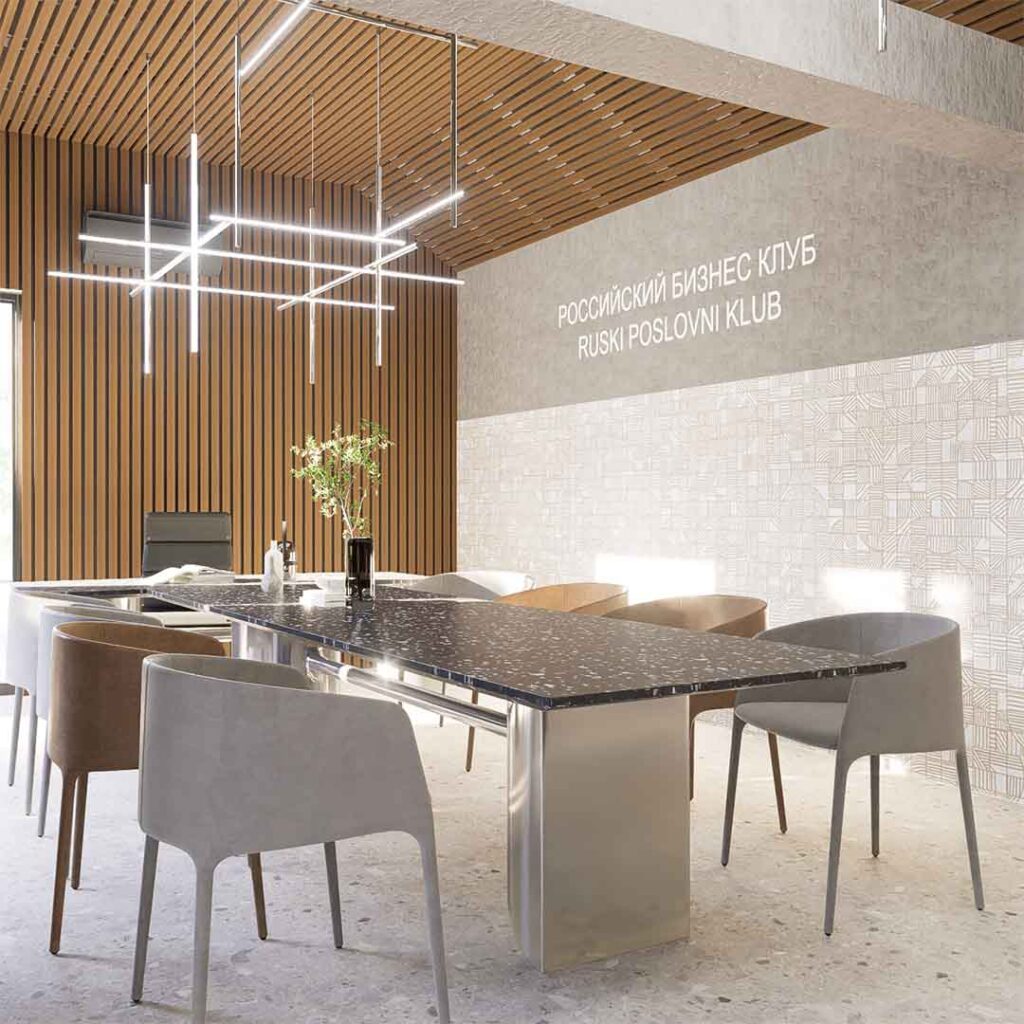
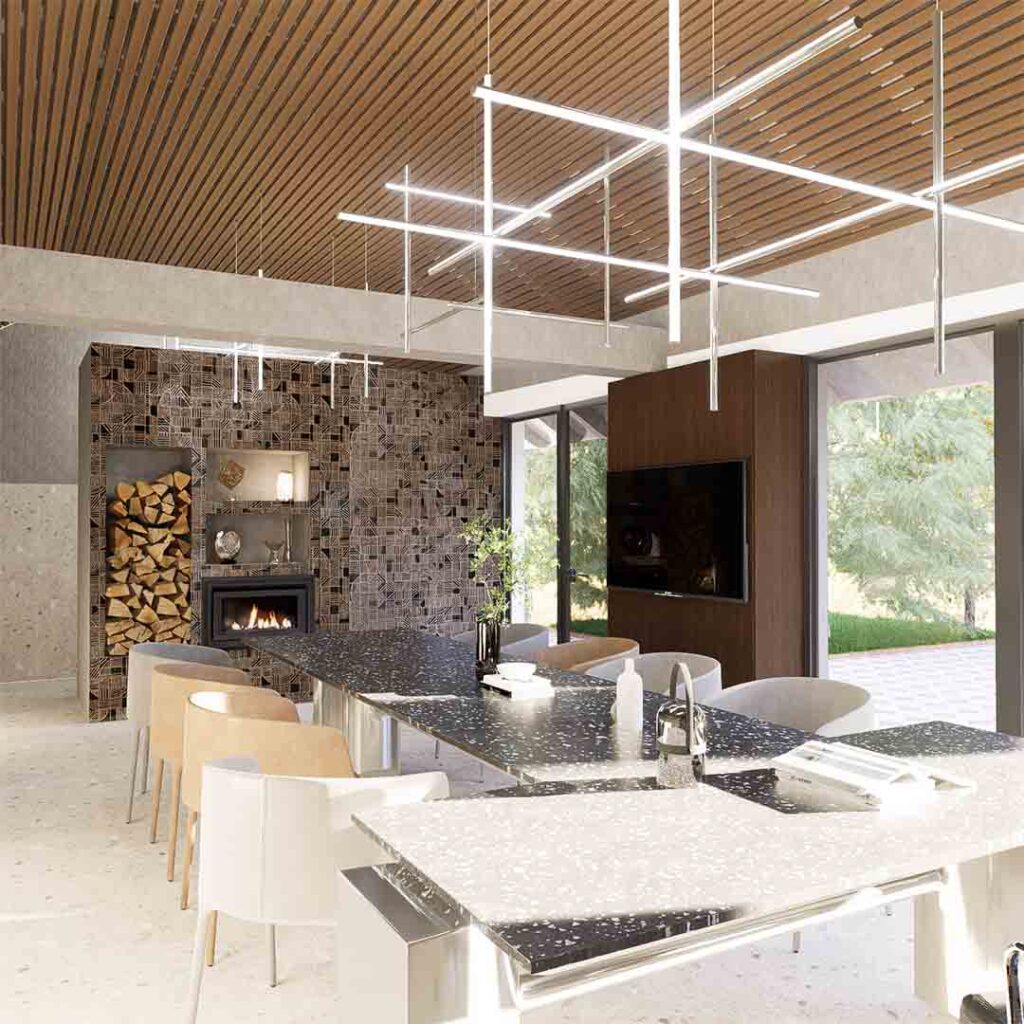
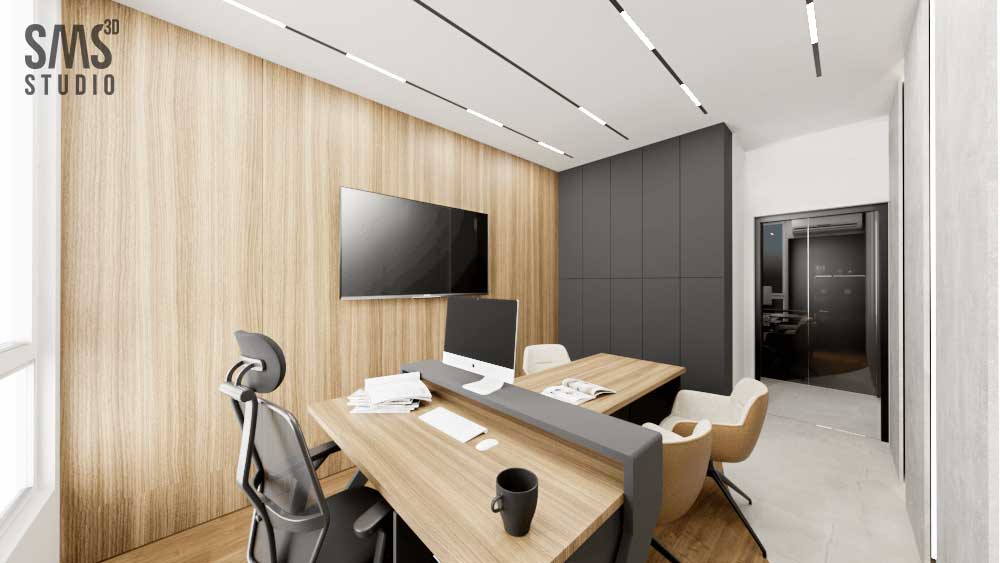
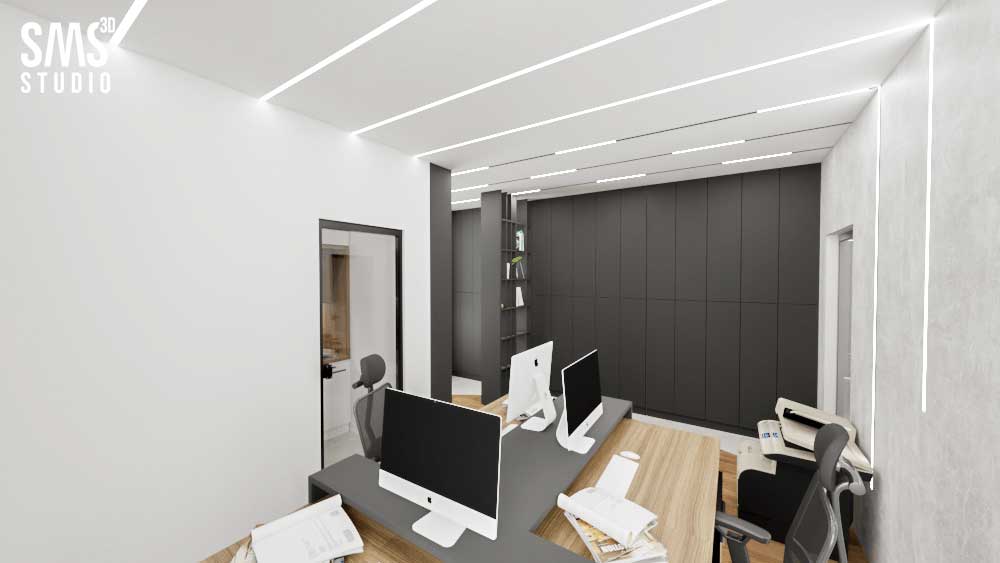
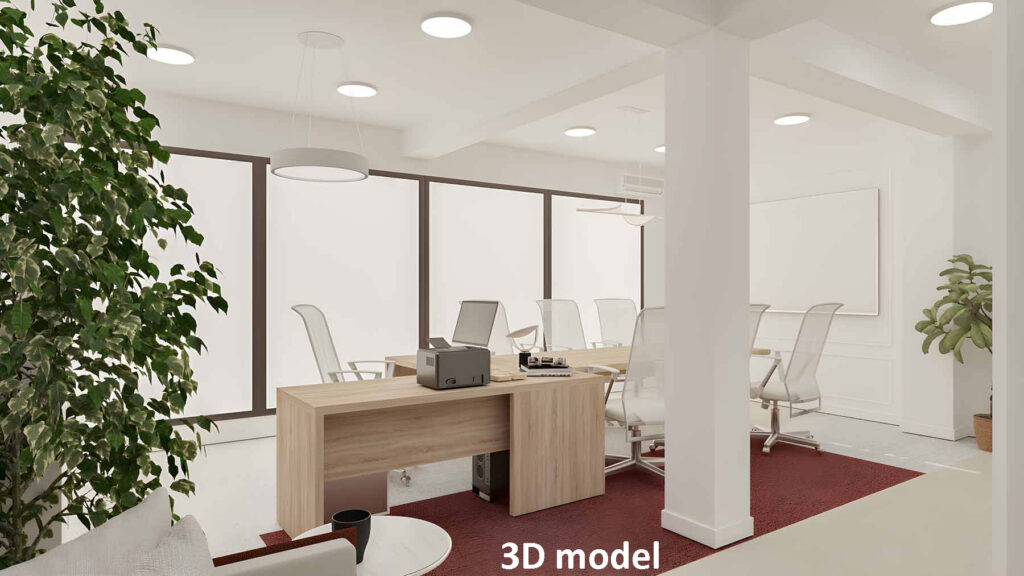
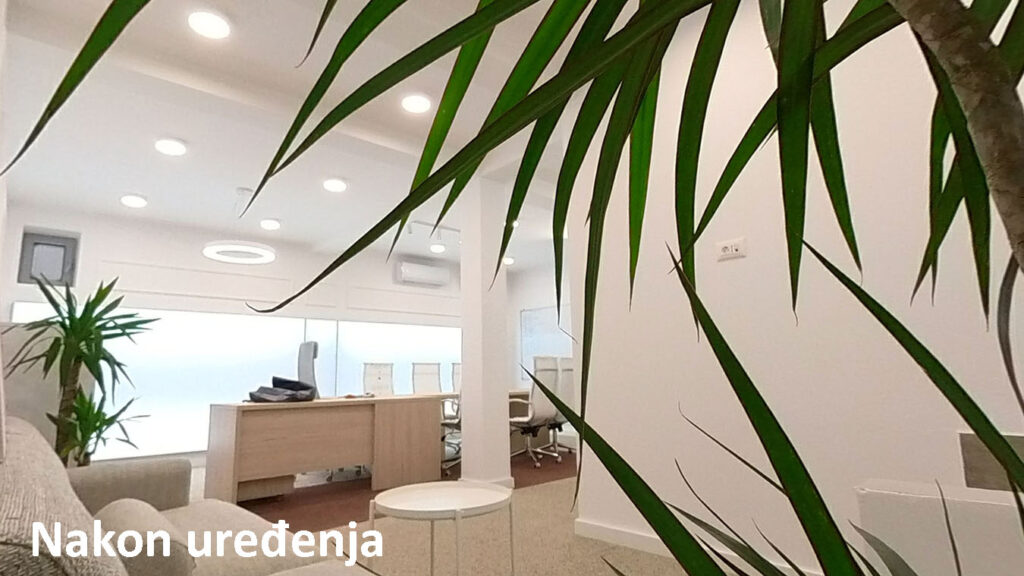
5. Air Conditioning
A high-quality air conditioning system is essential for maintaining a comfortable temperature and humidity level in the office. Air conditioning directly impacts employee productivity and comfort. Modern air conditioners are characterized by energy efficiency, quiet operation, and precise temperature control. Connecting air conditioning systems with smart technologies further enhances their efficiency and adaptability.
6. Lighting
Quality lighting is a crucial element in the design of business spaces. Natural light is preferable as it positively affects mood and productivity, but it often needs to be supplemented with artificial lighting to ensure adequate illumination throughout the day. LED lights are energy-efficient and durable solutions that can be tailored to various needs.
7. Quality of Materials
Using high-quality materials in interior design contributes to longevity, aesthetic appeal, and the maintenance of the business space. Materials such as wood, metal, glass, and environmentally friendly options should be carefully chosen to meet the specific requirements of the space, as well as sustainability and safety standards.
8. Space Organization
Efficient space organization involves optimal utilization of available space, creating zones for different activities (work, meetings, relaxation), and enabling flexibility in rearrangement. Open office layouts, glass-walled offices, and modular furniture allow for adaptation to various needs and the number of employees.
9. Smart Office
Integration of smart technologies in business spaces enables automatic management of various aspects such as lighting, heating, cooling, and security. Smart systems contribute to efficiency, cost reduction, and better resource control. For instance, smart thermostats and sensors can automatically adjust the room temperature based on the number of people present.
10. Paperwork Archiving
Archiving is crucial for business organization and protecting important documents. Modern business spaces often utilize digital archives to reduce the need for physical storage, but it’s still important to provide adequate space for storing physical documents that need to be accessible and secure.
Interior design for business spaces requires careful planning and implementation of various elements to create a functional, safe, and pleasant working environment. Each of the mentioned elements plays a crucial role in achieving optimal working conditions, which leads to increased productivity and employee satisfaction, as well as leaving a positive impression on clients and visitors.


